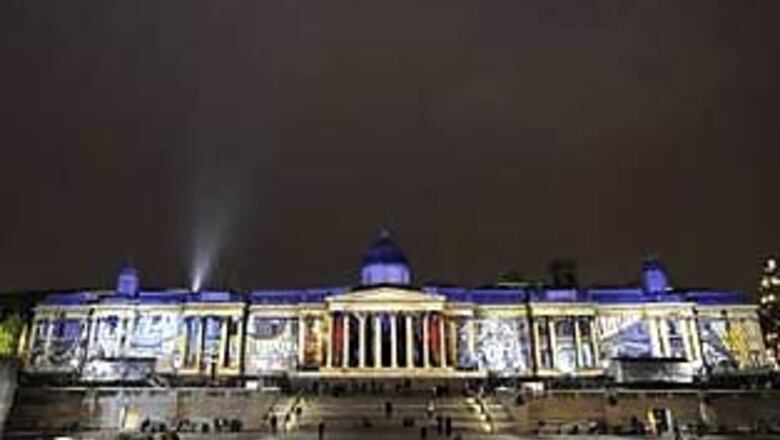
views
London: The National Gallery in London, one of the world's great public collections, has put on display a seedy reconstruction of Amsterdam's Red Light District in a rare foray into contemporary installation art.
When plans to house Ed and Nancy Kienholz's "The Hoerengracht" were announced last year, critics asked whether the normally reserved National was "prostituting itself" to contemporary art designed, at least in part, to shock.
But at a press preview on Tuesday, curator Colin Wiggins defended the decision to feature the installation which recreates a street and buildings caked in grime where life-like models of scantily clad women display themselves in windows.
He also underlined the links between the piece and famous Dutch paintings from the 17th century that belong to the gallery's permanent collection.
Wiggins also argued that the sordid subject matter, portrayed in all its "squalor", was not as out of place at the National as visitors may initially think.
"This is like walking into a 17th century Dutch painting of Amsterdam," Wiggins said.
"We have pictures of gang rape, we have pictures of incest, we have pictures of murder and torture and mutilation, but because people put them in gold frames and cover them in varnish ... they're safe, they're tame," he added.
The Kienholzes began making The Hoerengracht in 1983, just over a decade after they met at a party in Los Angeles and married. It took them around five years to make.
By the time they met, Ed Kienholz was already famous for installations that were controversial for tackling subjects including mental illness, abortion and the sex trade.
REAL MODELS
The Hoerengracht was inspired by the Red Light District in Amsterdam and the result of what Nancy said were "countless trips" to the area to take photographs and gather material. Ed died in 1994 aged 66.
The National has installed the piece in a darkened room lit only by the red glow of coloured lightbulbs and lampshades.
Visitors walk along a "street" complete with bollards and old bicycles chained to them, and small alleys down which they can walk and view the women on display.
The prostitutes are modelled on the bodies of friends of the Kienholzes in Berlin, where the giant work of art was created.
Each has a glass box over her head with the lid open, suggesting that at any time she could close it and in so doing shut off the outside world and the "voyeur".
Notable is the attention to detail, particularly the Kienholzes' attempts to convey the sordid, grubby nature of the streets and building interiors, complete with half-filled ashtrays, dust-covered magazines and dirty windows.
"It is an extremely serious exhibition and it does not in any way glamorize or romanticize prostitution," said National Gallery director Nicholas Penny.
"I also think the connections with traditional art in the National Gallery are very genuine ones."


















Comments
0 comment